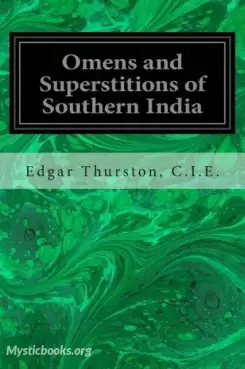
Timeline
Title
Country/Nationality
Edgar Thurston
Edgar Thurston was the British Superintendent at the Madras Government Museum from 1885 to 1908 who contributed to research studies in the fields of zoology, ethnology and botany of India, and later also published his works at the museum. Thurston was educated in medicine and lectured in anatomy at the Madras Medical College while simultaneously holding a senior position at the museum. His early works were on numismatics and geology, and these were later followed by researches in anthropology and ethnography. He succeeded Frederick S. Mullaly as the Superintendent of Ethnography for the Madras Presidency.
Whereas early European ideas on phrenology were applied to identify mental traits of individuals, advocates of scientific racism used what they considered to be more refined anthropometric measurements to identify castes. Thurston was one such person. He believed that intelligence was inversely proportional to the breadth of the nose and claimed that he scrutinised this as well as handwriting when recruiting clerks in his office. He gave lectures to the students of the Madras University and sometimes to the Madras Police on practical anthropology during the 1890s, and he trained the Madras Police in the use of anthropometry for criminal identification. The Bertillon system had already been incorporated in the Bengal and Madras Police departments by the 1890s and Thurston's training was intended to help the police identify membership of what were then termed as "criminal castes".
In 1901, Thurston was appointed to the Ethnographic Survey of India project, established at that time following the success of Herbert Hope Risley's Ethnographic Survey of Bengal. Risley was an adherent to the theories of scientific racism and had been appointed as director of Ethnology in India. Thurston worked as a part of this project to collect accurate anthropometric measurements. These included a number of measurements of the skull and derived indices or proportions such as the nasal index. He did this work alongside his role as superintendent of the Madras Museum, a position that he did not leave until 1908.
Thurston made numerous collections of plant and animals specimens, many of which were sent to the British Museum. In the late 1880s he was involved in studies on pearl fishing in the Gulf of Mannar. On a visit to Europe he sought to find electric lights that would work at a depth of 20 fathoms so as to assist in pearl harvesting. Some species have been named after him, including the marine organisms Manaria thurstoni (E.A. Smith, 1906), Sepia thurstoni (W. Adam & W. J. Rees, 1966), Mobula thurstoni (Lloyd, 1908), and Ecteinascidia thurstoni (Herdman, 1890). Also, a species of Indian snake, Gerrhopilus thurstoni (Boettger, 1890), is named in his honor.
The standard author abbreviation E.Thurst. is used to indicate this person as the author when citing a botanical name.
Thurston was awarded the Kaisar-i-Hind Medal, first class, on 26 June 1902. He was made C.I.E. in 1909. He retired to England and spent his winters at Penzance where he studied the local plants and regularly hosted a New Year party for the local botanists. He died on 12 October 1935 at Penzance.
Books by Edgar Thurston

Omens and Superstitions of Southern India
This book deals mainly with some aspects of what may be termed the psychical life of the inhabitants of the Madras Presidency, and the Native States of Travancore and Cochin.